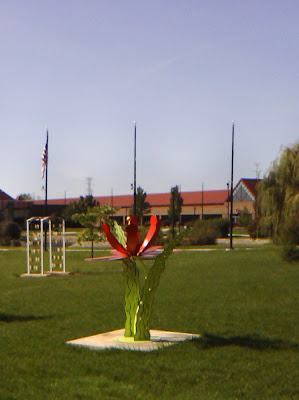 |
| The burnt remains of an arson fire on South Ave in Toledo |
The fact is Toledo Has a growing problem with arson crimes.
As a class we decided that this was a topic we wanted to explore. In doing
research for our class project, we discovered that according to the numbers
collected by the FBI, Toledo is ranked fourth in the nation for arson. After
talking with the Toledo Fire Department and explaining our project we were
given a list of address of arson sites.
As we canvased the neighborhoods we found some of the homes
were completely destroyed, whereas others were still standing. There was one
thing each of these sites had in common. At every location that we visited, the
arson fire caused damage to a neighboring home.
Arson not only affects the owner of the property, it is a
crime that affects the whole neighborhood.
 |
| Another site of arson on Kenilworth street in central Toledo. |
*the sound slide
portion of our project can be viewed on Rust
Wire
Burned: the rust
belt on fire
A photo story by
the intro to photojournalism class at Owens CC
Arson is the leading cause of fires in the United States, according
to the
U.S. Fire Administration. Of these fires, 30 percent are
in structures, including homes. Fire officials estimate that 50 percent of all
fires may be intentionally set, yet it is difficult to determine the actual
number of arson fires because a good number of them go unreported.
The FBI estimates that four out of
the top 10 cities in the United States for arson crimes reported are in
Ohio.
The fourth spot on the list is right here in Toledo. The Office of the
Illinois State Fire Marshal reported
that the six common motives for arson are:
 |
Another view of the distruction left behind at the site of the arson fire
on South ave. Toledo, Ohio |
- ·
Excitement
- ·
Vandalism
- ·
Crime Concealment
- ·
Revenge
- ·
Extremist/Terrorist
- ·
Profit
The Introduction to Photojournalism class at
Owens Community College visited some of the sites of arson fires in the Central
Toledo area.
Why should we care about arson and its impact on the rust belt?
Arson is a felony crime. It is a crime against people and every year
firefighters are killed in responding to open-air fires. Then there is the cost
of the fires. Firefighters must be paid, the cost of supplies to fight the
fires, the value of the property destroyed and the loss of tax revenue are all
things to be considered.
In spite of the numbers and the fact that arson is a crime,
the real reason we should care about the growing problem of arson in the rust
belt is the fact that while firefighters are away battling a needless fire,
they can not be there should a real emergency arise. The cost of arson is more
than money it is putting lives at risk.














